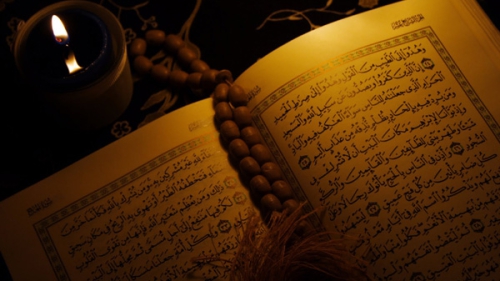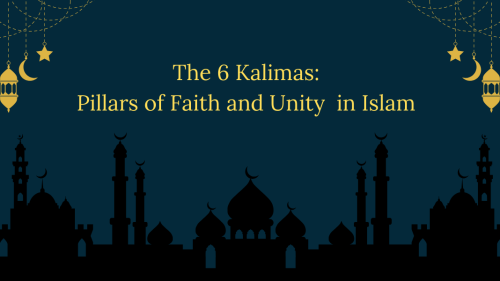Conceptualizing Islamic Housing

Islamic housing is a blend of the belief system, teachings and values of Islam, and the prerequisites and influences of indigenous cultures, climates, topographies, building materials, talents, technologies, and economies. The former is characterized as universal, total, permanent, immutable, and absolute. It came from Allah in the form of revelation (wahy). It is divine. The latter, however, fluctuates and varies from one region to the other, and from one community to the other. It is indigenous, though locally permanent and unchangeable, as far as climates and topographies are concerned, but it is impermanent, conditional and changeable, as far as some cultural manifestations, building materials, talents, technologies and economies, are concerned.
Islamic housing is a mixture of the heavenly and terrestrial factors and elements. Both sides are extremely important, playing their respective roles. They finely complement and add to each other's strength and operation. Neglecting either of the two poles in Islamic housing inevitably leads to a serious damage in its fundamental nature, at a conceptual or a practical level. The heavenly or divine factors give Islamic housing a soul, moral fiber, and its conspicuous identity. They present it with a special aura that is effortlessly exuded by Islamic houses inside as well as outside their ambits. The terrestrial factors, on the other hand, impart about Islamic housing an intuition about its compelling worldliness, simplicity and utter practicality and pragmatism. They provide a powerful feeling about Islamic houses' and their users' congenital mortality. Nobody should ever get carried away and deceived, treat his house or his self differently.
Even though Islamic housing is inspired and deeply rooted in a transcendental idea and message, it still operates and is greatly influenced and shaped by the exigencies of space and time factors and experiences. It is because of this that Stefano Bianca remarked on the extent to which the Islamic spirituality influences Islamic architecture: "Compared with other religious traditions, the distinctive feature of Islam is that it has given birth to a comprehensive and integrated cultural system by totally embedding the religious practice in the daily life of the individual and the society. While Islam did not prescribe formal architectural concepts, it molded the whole way of life by providing a matrix of behavioral archetypes which, by necessity, generated correlated physical patterns. Therefore, the religious and social universe of Islam must be addressed before engaging in the analysis of architectural structures."1
At the heart of Islamic housing stand Muslims as patrons, architects, planners, engineers, draftsmen and users. As we have explained somewhere else, Islamic education must give Muslims a clear picture of the religious and civilizational significance of Islamic housing, as well as of all the relevant issues which are directly and indirectly related to it. Surely, a segment of such an educational process and system should be a notion that there is nothing fixed or predetermined in the area of Islamic housing, and that Islamic housing is a result of a process where more than a few factors, phases, and parties are involved and are thus all equally important. It is as good as impossible to identify a phase, or a factor, or a party in that process and regard it as more important than the others. The Islamic housing process starts with having a proper understanding and vision which leads to making a right intention (niyyah). It continues with the planning, designing and building stages, and ends with attaining the net results and how people make use of and benefit from them. What is important is that everyone involved in the creation and actualization of Islamic housing: from patrons and various authorities, over planners, architects and builders, to the owners and users of houses, duly honours the dictates of both the teachings and principles of Islam, and the localized cultural, socio-economic and ecological elements and phenomena.
Indeed, this is the biggest requirement in Islamic housing. It is a requirement that everyone involved possesses a proper understanding and vision, that everyone sincerely tries his or her level best to rise to the challenge of transporting the idea of Islamic housing from the realm of theory and concept to the realm of physical realities and solutions, and that the goals and aspirations of Muslims, especially housing authorities and professionals, mirror, and are subservient to, the ultimate goals and aspirations of Islam. Regardless of what might be the net result of this approach of Muslims to housing, their houses are entitled to be rightly called and held as "Islamic" as they duly adhere to the few, but fundamentally pertinent, requirements of Islamic housing. It does not matter in Islamic housing how houses look like, if their appearances are not linked to, and are not inspired by, the force of the unification of Islam and the fluctuating space and time factors. Moreover, in Islam, it does not matter how houses look like, if their appearances are not due to some creative initiatives which have been stirred by the unification of the spiritual and material kingdoms of existence, by the unification of the heavens and the earth. A housing style that does not honor the tenets and values of Islam cannot be called "Islamic". In the same vein, a housing style that betrays the demands of its indigenous climate, environment, traditions, technology and economy cannot be called "Islamic" either.
It follows that concerning housing, the only thing that Islam wants from Muslims is that they entertain no compromise with regard to the subject of ardent following in pure religious matters, which too constitute the essence and character of Islamic housing, but at the same time that they completely shun imitation and that they become the greatest advocates of innovation and creativity while trying to overcome their housing problems and challenges. Since its inception, Islam declared a war against ignorance, mediocrity and blind following. Since its inception, too, Islam became the greatest proponent of knowledge, reason, ingenuity, initiative and excellence. For Muslims to turn away from the inspiration and guidance of Islam in their housing will be a serious crime against their religion, history, culture and their very selves. For Muslims, furthermore, to blindly follow and import other people's housing solutions will also be a serious crime against the very spirit of Islam, as well as against the innate disposition of life and the human consciousness. In other words, Islam insists that Muslims be devout, righteous and ethical. It also insists, as a condition for securing the benefits of the former, that Muslims be open-minded, sensible, proactive, productive and imaginative.
Islam did not instruct Muslims how to plan and build houses, but it did instruct them how to carry out a number of tasks directly or indirectly associated with the house and housing. Some of such tasks are: privacy protection against the outside world, among the family members, and between the family members and visitors, respect for the rights of guests and visitors, respect for the rights of neighbours, the relationship between men and women, the implications of carrying out religious obligations, hygiene, peaceful coexistence with the natural environment, safety, security, recreation, modesty, Islam's aim to preserve the life, religion, mental and psychological strength, descendants and wealth of its people.
The net result of this strategy is that there are - and there should always be -- many types of the Islamic house, such as those in the Middle East, the Indian Subcontinent, Turkey, Iran, the Islamic West (al-maghrib al-Islami), South-East Asia, etc., but the soul and fundamental nature of all those housing types will always be the same and will be easily recognizable by those familiar with the character of Islam and the character of its civilization. What those different-yet-same, or same-yet-different, houses represent are, in fact, people's solutions to the challenges posed by their living of their family lives in line with their religious guidelines while, at the same time, complying with the requirements of physical and cultural contexts in which they live. While creating Islamic architecture, Muslims betray neither their religion nor their living conditions.
Eventually, most of what became to be known as the language of Islamic residential architecture, such as the inner courtyard, partly or fully screened windows, raising windows above the eye level, bent entrances, parapets, or protective walls, along the edges of balconies and open roofs, double circulation inside houses: one for men and the other one for women, or one for the family members and the other one for guests and visitors, inward looking designs, guest rooms near main entrances and away from houses' core, gradual and held back progression from the outside to the inside, certain decorative systems and styles, arcades, arches, porticos, recesses or niches, etc. -- such must be seen as sets of best solutions that people have evolved for themselves. They are to be seen as no more than that. Such structural solutions must not be seen as the prescribed language of Islamic residential architecture that cannot be revised, enriched, improved, altered and even abandoned, to a certain extent or completely, if necessary and in favour of some other equally or more viable solutions presented by advances made by science and technology, and generally by the implications of people's living conditions. Likewise, such structural solutions are not to be held as religious symbols with some ontological significance.
Muslims must keep in mind that their Islamic houses are to be alive, pulsating, and serviceable. Their houses are to comfortably suit and fit them as their users just as a perfect dress comfortably fits a body. About this, Ibn Qutayba, a Muslim scholar of the 9thHijrah century, compared the house -- as quoted by Afif Bahnassi -- to a shirt, saying that just as the shirt should fit its owner, the house too should suit its dwellers.2 Every ingredient in an Islamic house is functional and serves a noble purpose, on its own or along with some other ingredients. An Islamic house contains no elements that are meaningless and lifeless, or that are unessential to its widest spectrum of functions and serviceability. An Islamic house does not function like a museum or a monument which only sporadically springs into life. An Islamic house is pleasant, friendly, warm, welcoming, relaxing and exciting. In short, an Islamic house is Islam manifested. Within and without its realm, it exudes the power and beauty of an Islamic lifestyle, promulgating its spiritual appropriateness and worth. At the outset, Muslims conceive and shape their houses and then they tend to influence and "shape" them and their attitudes. This is in line with a statement made by Winston Churchill on human built environment: "We shape our buildings (built environment) and afterwards they shape us."3 Finally, neither formalism nor literal symbolism has a place in Islamic housing.
Creating Islamic housing is anything but an easy and simple task. Muslim housing professionals must come to terms with the enormity of the task that awaits them. The good news, however, is that in no way can they fail in their undertakings as long as they remain sincere, try their best and stay the course while attempting to remedy the current Muslim housing ailments. This is an assurance from Allah to every servant of His who dedicates his or her life to the service of Allah and to the service of Islamic society. This is so because in Islam human deeds are judged by their intentions (niyyah), because Allah appreciates human efforts, which are under people's very jurisdiction, rather than the outcomes, which, more often than not, are beyond the jurisdiction of people, and finally because of the unique Islamic concept of ijtihad according to which if a person, while forming diligently independent opinions or judgments about matters on which divine texts are silent using as a platform the framework of available texts, gets things right he will receive two rewards, but if he for whatever reasons gets things wrong he will still get one reward for his sincere intention and dedicated efforts.
Certainly, there are no better incentives for Muslim housing professionals to get down to the project of reviving the phenomenon of Islamic housing than the above-mentioned Islamic precepts. There are no alternatives that can yield better results and benefits to them, in this world as well as in the Hereafter. If truth be told, at the present when the signs of a Muslim cultural and civilizational re-awakening are becoming increasingly evident, reviving Islamic housing becomes so vital. It becomes a sheer necessity. Nothing else could be an adequate alternative or a surrogate. Hence, the best contributions of Muslim housing professionals to the ongoing Muslim regeneration will be their contributions to the revival of Islamic housing. Such contributions will be on a par with any other colossal contribution in terms of its value, impact and general appreciation and approval. Finally, it goes without saying that deliberately failing to do their part, yet lead the way, in revitalizing and restoring Islamic housing exposes Muslim housing professionals to a serious peril. The peril will be on a par with any other colossal peril due to which the cultural and civilizational apathy and stupor of Muslims only exacerbated and lengthened. Reviving Islamic housing warrants great rewards. Ignoring, and thus aggravating it, warrants some serious and unwelcome repercussions for all the responsible parties.
About the state of the majority of Muslim architects and planners today, Cliff Moughtin and Tarik Shalaby in their paper "New approach to housing design in Muslim cities" said: "The planner and architect in the Muslim world seem to have rejected the discipline of their culture, unaware of the fact that each community has its specific social and cultural roots. Instead they adopted alien ideas which are unsympathetic to the tradition of the people they serve (i.e., Muslims). The "good" housing solution is the one that fully expresses the preferences, aspirations and psychological needs of the group for whom it is meant. It has nothing to do with the clever application of principles deduced from an abstract theory of architecture."4
===========
Notes:
1. Stefano Bianca, Urban Form in the Arab World, (London; New York: Thames and Hudson, 2000),p. 22-23.
2. Afif Bahnassi, The Islamic Architecture and its Specificities in Teaching Curricula, http://www.isesco.org.ma/pub/Eng/Islarch/P2.htm
3. Faida Noori Salim Atto, The Importance of Architecture and Urban Design to Identity Formation of Neighborhood's Community, The Proceedings of the International Housing Symposium III, 20-23.5.2007, Riyadh, Saudi Arabia, p. 101.
4.Cliff Moug htin& Tarik Shalaby, New Approach to Housing Design in Muslim Cities, (pp. 211-236); Inside: Housing in the Islamic City, Proceedings of a Symposium held in Ankara , Turkey , on 21-25.7.1984. Proceedings prepared by: Center of Planning and Architectural Studies, Cairo.
*****
Dr. Spahic Omer, a Bosnian currently residing in Malaysia, is an Associate Professor at the Kulliyyah of Architecture and Environmental Design, International Islamic University Malaysia. He studied in Bosnia, Egypt and Malaysia. His research interests cover Islamic history, culture and civilization, as well as the history and philosophy of the Islamic built environment. He can be reached at spahicoyahoo.com; his blog is at www.medinanet.org.

















